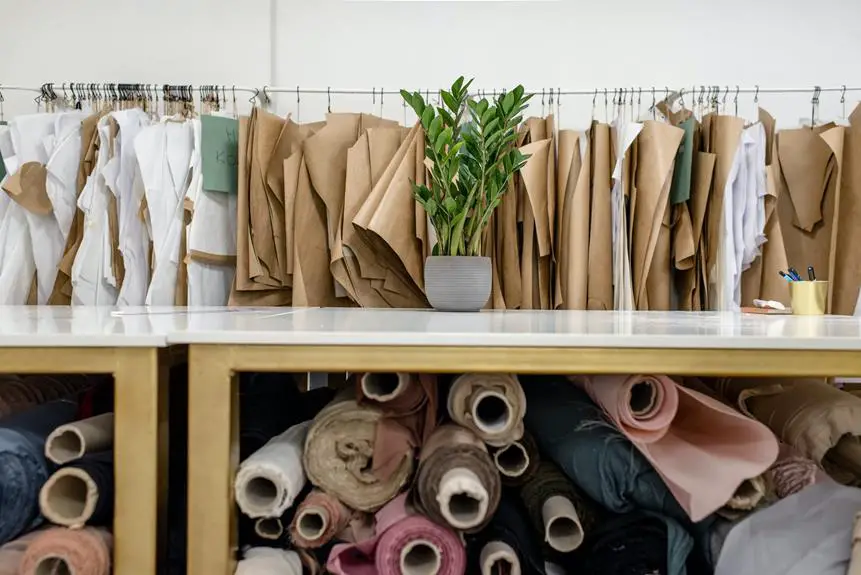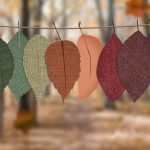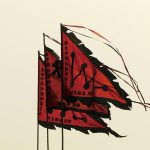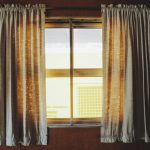If you've ever pondered the choice between jacquard and damask fabrics, you're not alone. Each fabric brings its own unique blend of history, elegance, and practicality to the table.
In this exploration, you'll delve into the intricate weave patterns, durability, and design options that distinguish jacquard and damask fabrics. By the end, you'll have a thorough understanding of the qualities that set these two luxurious fabrics apart, empowering you to make an informed decision for your next project.
So, let's embark on this journey of discovery to determine which fabric truly comes out on top: jacquard or damask?
Key Takeaways
- Jacquard fabric originated in France in the early 19th century, while Damask fabric has its origins in ancient China and gained prominence during the Middle Ages in Damascus.
- Jacquard fabrics have a raised pattern and showcase intricate, detailed designs with a variety of colors, while Damask fabrics have a smooth, shiny surface and feature reversible patterns that can differ on each side.
- Jacquard fabrics are versatile and suitable for upholstery, curtains, and clothing, while Damask fabrics are often preferred for formal settings such as tablecloths and draperies.
- Jacquard fabrics are known for their strength and durability, while Damask fabrics are relatively easier to maintain and more resistant to stains and wear.
History and Origins
When you're exploring the history and origins of jacquard and damask fabrics, it becomes evident that each has a rich and unique background.
The jacquard fabric originated in the early 19th century in France, named after its inventor, Joseph Marie Jacquard. This revolutionary fabric was produced using a special loom that could create intricate patterns and designs, marking a significant shift in textile production.
On the other hand, damask has its origins in ancient China and gained prominence during the Middle Ages in the city of Damascus, from which it derived its name.
Both fabrics hold immense cultural significance. Jacquard, with its elaborate designs, was often associated with wealth and luxury, adorning the clothing and furnishings of royalty and the elite. Damask, with its reversible patterns and rich colors, also became a symbol of opulence and was highly sought after.
Understanding the origins and cultural significance of these fabrics provides insight into their enduring appeal and timeless elegance.
Fabric Characteristics
To compare jacquard and damask fabrics, you should examine them for their distinctive textures and patterns.
Jacquard fabrics are characterized by intricate designs woven directly into the fabric, creating a raised pattern, while damask fabrics feature reversible patterns with a smooth, shiny surface.
Here are some key characteristics to consider when comparing these two luxurious fabrics:
- Texture: Jacquard fabrics have a raised pattern, providing a textured feel, whereas damask fabrics are smooth and shiny, offering a different tactile experience.
- Patterns: Jacquard fabrics often showcase intricate, detailed designs with a variety of colors, while damask fabrics feature reversible patterns that can differ on each side.
- Durability: Both jacquard and damask fabrics are known for their durability, making them suitable for upholstery, drapery, and other decorative applications.
- Weaving Techniques: Jacquard fabrics are woven using a special jacquard loom, allowing for complex patterns, while damask fabrics are woven on a drawloom, producing reversible patterns with a satin finish.
- Fabric Origins: Jacquard weaving originated in France, while damask weaving has historical roots in the city of Damascus, hence the name.
Understanding these characteristics can help you make an informed decision when choosing between jacquard and damask fabrics for your next project.
Versatility and Applications
As you consider the versatility and applications of jacquard and damask fabrics, it's important to understand their unique suitability for various projects and settings. When comparing the versatility of jacquard and damask fabrics, it's evident that both offer distinct advantages for different applications. Jacquard fabrics are highly versatile, making them suitable for upholstery, curtains, and even clothing. On the other hand, damask fabrics, with their intricate patterns, are often preferred for formal settings such as tablecloths, draperies, and decorative pillows. Below is a comparison table highlighting the versatility and application differences between jacquard and damask fabrics:
| Aspect | Jacquard Fabric | Damask Fabric |
|---|---|---|
| Versatility | Highly versatile, suitable for various uses | Suited for formal settings and décor |
| Application | Upholstery, curtains, clothing | Tablecloths, draperies, decorative pillows |
Understanding the versatility and application differences between jacquard and damask fabrics is crucial when considering which fabric best suits your project or setting. Whether you're aiming for a versatile fabric or one that exudes elegance in formal settings, both jacquard and damask have distinctive offerings.
Durability and Maintenance
When it comes to durability, both Jacquard and Damask fabrics have their strengths and weaknesses. Understanding the maintenance requirements for each fabric will help you make an informed decision.
Let's take a closer look at how Jacquard and Damask stack up in terms of durability and maintenance.
Durability: Jacquard Vs Damask
You need to consider the durability and maintenance of both jacquard and damask fabrics when making your decision. When comparing the durability of jacquard and damask fabrics, several factors come into play:
- Fabric Strength: Jacquard fabrics are known for their strength and durability, making them a great choice for heavy-use items like upholstery and drapery.
- Maintenance Requirements: Damask fabrics are relatively easier to maintain compared to jacquard, as they're often made from synthetic materials that are more resistant to stains and wear.
- Longevity: Jacquard fabrics tend to have a longer lifespan due to their intricate weaving process and sturdy nature.
- Resistance to Wear: Damask fabrics are less prone to wear and tear, making them suitable for items that require frequent use.
- Environmental Factors: Damask fabrics may be more susceptible to damage from environmental factors such as sunlight and moisture compared to jacquard fabrics.
When considering the durability of jacquard versus damask fabrics, it's essential to evaluate your specific needs and usage requirements.
Maintenance: Jacquard Vs Damask
Consider the maintenance requirements of jacquard and damask fabrics to make an informed decision about which fabric best suits your needs.
Both jacquard and damask fabrics require careful cleaning methods and fabric care to ensure their longevity.
When it comes to jacquard, its intricate patterns and raised designs may require gentle spot cleaning to prevent snagging or damaging the fabric.
On the other hand, damask fabrics are often more resilient and can withstand regular machine washing, making them easier to maintain.
However, both fabrics benefit from regular vacuuming and gentle brushing to remove dust and debris.
Additionally, following the manufacturer's care instructions is crucial for preserving the quality of both jacquard and damask fabrics.
Ultimately, the maintenance requirements of each fabric should be considered based on your lifestyle and cleaning preferences.
Design and Patterns
For a comprehensive understanding of the design and patterns of Jacquard and Damask fabrics, explore the intricacies of their weaving techniques and visual motifs. Both Jacquard and Damask fabrics offer a wide array of design trends and pattern preferences that cater to diverse aesthetic tastes.
Here are some key points to consider when comparing the design and patterns of these two luxurious fabrics:
- Weaving Techniques: Jacquard fabrics are renowned for their intricate woven patterns, often featuring elaborate designs such as brocades, florals, and geometric motifs. In contrast, Damask fabrics are characterized by their reversible patterns, created using a combination of satin and sateen weaves.
- Visual Motifs: Jacquard fabrics exhibit a raised pattern that's woven directly into the fabric, resulting in a luxurious, textured finish. Damask fabrics, on the other hand, showcase a subtle, tone-on-tone pattern that creates a sophisticated, understated elegance.
- Design Versatility: Jacquard fabrics are celebrated for their ability to showcase intricate, multicolored designs, making them a popular choice for upholstery, curtains, and decorative textiles. Damask fabrics, with their timeless, single-color patterns, are often favored for formal table linens, bedding, and draperies.
- Contemporary Appeal: Both Jacquard and Damask fabrics have evolved to incorporate modern design trends, offering a blend of traditional elegance and contemporary flair.
- Pattern Preferences: While Jacquard fabrics are favored for their ornate, detailed patterns, Damask fabrics appeal to those seeking refined, understated designs.
Understanding the design and patterns of Jacquard and Damask fabrics empowers you to make informed choices when selecting textiles for your interior design projects.
Price and Availability
When it comes to choosing between jacquard and damask fabrics, understanding the price and availability can greatly impact your decision.
The cost differences, supply chain variations, and market demand variances all play a role in determining which fabric is more accessible and affordable for your needs.
Cost Differences
Looking at the cost differences between jacquard and damask fabrics, you'll find variations in price and availability based on factors such as weave complexity and material quality. Both jacquard and damask fabrics can vary significantly in cost due to the intricacy of their production methods and material composition.
Here's a breakdown of the cost differences:
- Jacquard fabrics often come at a higher price point due to their intricate patterns and designs.
- Damask fabrics, while also intricate, may be more readily available at varying price points.
- Material composition plays a significant role in cost differences, with jacquard fabrics often being made from luxurious materials such as silk or high-quality synthetic fibers.
- Damask fabrics can be found in a wider range of materials, including cotton, linen, and blends, affecting their prices accordingly.
- Availability of both fabrics may vary based on fashion trends and seasonal demands.
Understanding these cost differences can help you make an informed decision based on your preferences and budget.
Supply Chain Variations
To understand the supply chain variations affecting the price and availability of jacquard and damask fabrics, you need to consider the influence of global sourcing and production methods.
The production methods for jacquard and damask fabrics can significantly impact their price and availability. Damask fabrics are typically produced using a weaving technique that creates a subtle pattern, while jacquard fabrics are woven with a more intricate design. These differences in production methods can affect the cost and availability of the fabrics.
Additionally, the environmental impact of production methods is a growing concern for many consumers. This has led to an increased demand for sustainably sourced and produced fabrics, which can further influence the supply chain and pricing of jacquard and damask fabrics.
Understanding these supply chain variations is crucial in making informed decisions about fabric selection.
Market Demand Variances
As you consider the market demand variances for jacquard and damask fabrics, it's important to understand how these factors impact their price and availability.
Consumer preferences play a significant role in driving the market demand for these fabrics. Shifts in consumer preferences can lead to fluctuations in demand, affecting both the price and availability of jacquard and damask fabrics.
High market demand for a particular fabric can drive up its price, especially if the supply is limited. Increased market demand may lead to shortages of certain fabrics, making them less readily available.
Production costs also come into play. Higher demand can drive up production costs, influencing the final price of the fabrics.
Additionally, changing market demands based on trends can impact the availability and pricing of jacquard and damask fabrics.
Frequently Asked Questions
Can You Recommend Any Specific Brands or Manufacturers Known for Producing High-Quality Jacquard or Damask Fabrics?
For high-quality jacquard or damask fabrics, consider top brands like Company X and Y. Both are reliable manufacturers known for producing exquisite textiles. Their commitment to quality and craftsmanship make them stand out in the industry.
What Are Some Common Misconceptions About Jacquard and Damask Fabrics That You Often Come Across?
Common misconceptions about jacquard and damask fabrics often revolve around their properties. Understanding their historical significance and cultural influences helps debunk myths, allowing you to appreciate the unique qualities of each fabric.
Are There Any Specific Care Instructions or Cleaning Techniques That Are Unique to Jacquard or Damask Fabrics?
To properly maintain jacquard or damask fabrics, unique care and cleaning techniques are essential. These fabrics often require gentle spot cleaning and low-temperature ironing to preserve their intricate designs and delicate fibers.
How Do Jacquard and Damask Fabrics Compare in Terms of Environmental Impact and Sustainability?
When comparing jacquard and damask fabrics in terms of environmental impact and sustainability, consider their fabric production, textile industry influence, and ethical sourcing. Both offer eco-friendly materials, but their environmental impact varies.
Are There Any Cultural or Regional Associations With Jacquard or Damask Fabrics That Are Important to Consider When Choosing Between the Two?
Consider the cultural significance and regional preferences when choosing between jacquard and damask fabrics. Understanding these associations can provide insight into the historical and traditional uses of each fabric, helping you make an informed decision.
- How Does Ring Spun Cotton Affect Garment Fit and Shape Retention? - August 13, 2024
- What Are the Challenges in Producing Ring Spun Cotton? - August 13, 2024
- Is Ring Spun Cotton Suitable for Plus-Size Clothing? - August 13, 2024







